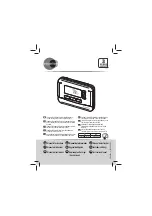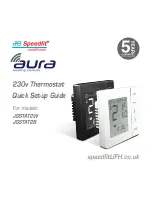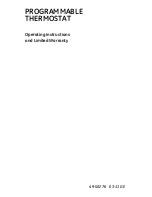
GVS K-BUS
○
R
KNX/EIB
Thermostat
4
www.video-star.com.cn
marketing@video-star.com.cn
Tel.
:(
8620
)
39338986
Fax.
:(
8620
)
39338465
1. Summary
Thermostat is a device to control indoor temperature. It adjusts the room temperature and relative
humidity according to the measured temperature and relative humidity, generally implemented by
controlling indoor temperature controller and fan coil actuator on the bus. Thermostat closely bound up
with our living environment. For example, in an air-conditioned room, people would feel comfortable only
the room temperature and relative humidity is under in a certain range. Then we can monitor the current
actual indoor temperature, relative humidity through the panel, if it is beyond control, the Thermostat will
send a signal to adjust the indoor temperature and humidity by air condition. It is also widely applied in
other industries, such as food industry, temperature and humidity are essential, greenhouse and other
humidity-related industries.
User can adjust the indoor temperature according to their needs by capacitive touch buttons. LCD
screen displays the status of the current temperature control.
This user manual provides specific technical information including installation and programming
details, and explains how to use the binary input by the application examples.
1.1 Product and function instruction
Temperature control panel mainly used in building control systems and installed with EIB / KNX bus
and other devices together as a system. It’s connected directly to the terminal via the EIB bus, needed of
additional power supply. Standard 86 wall-mounted installation. You can use the engineering design
software ETS (version above ETS3 ) with VD4 ETS files to allocate physical address and set up
Parameter.
Main function summarized as below:
Capacitive touch buttons, LCD display
Selected internal and external temperature sensor
Basic and additional heating and cooling temperature control function
Relative and absolute room temperature adjustment function
Variety of temperature control mode, continuous PI control, switching PI control and





































